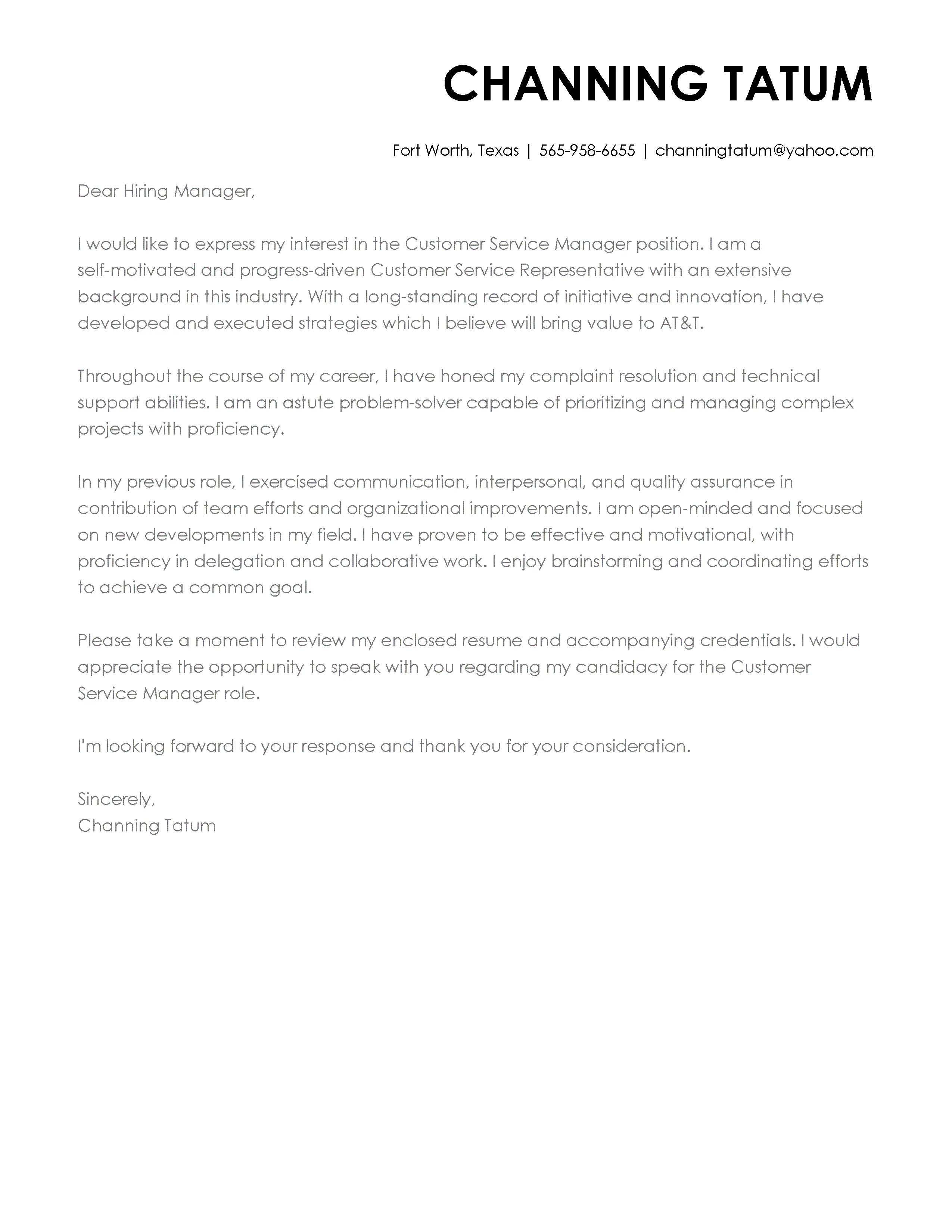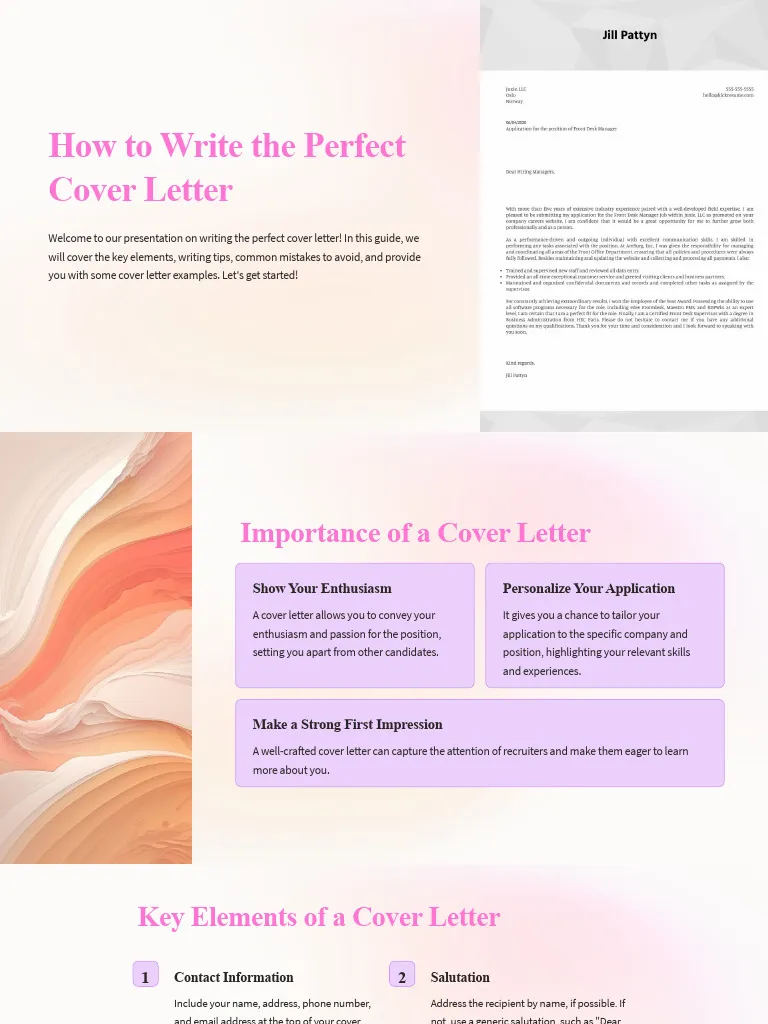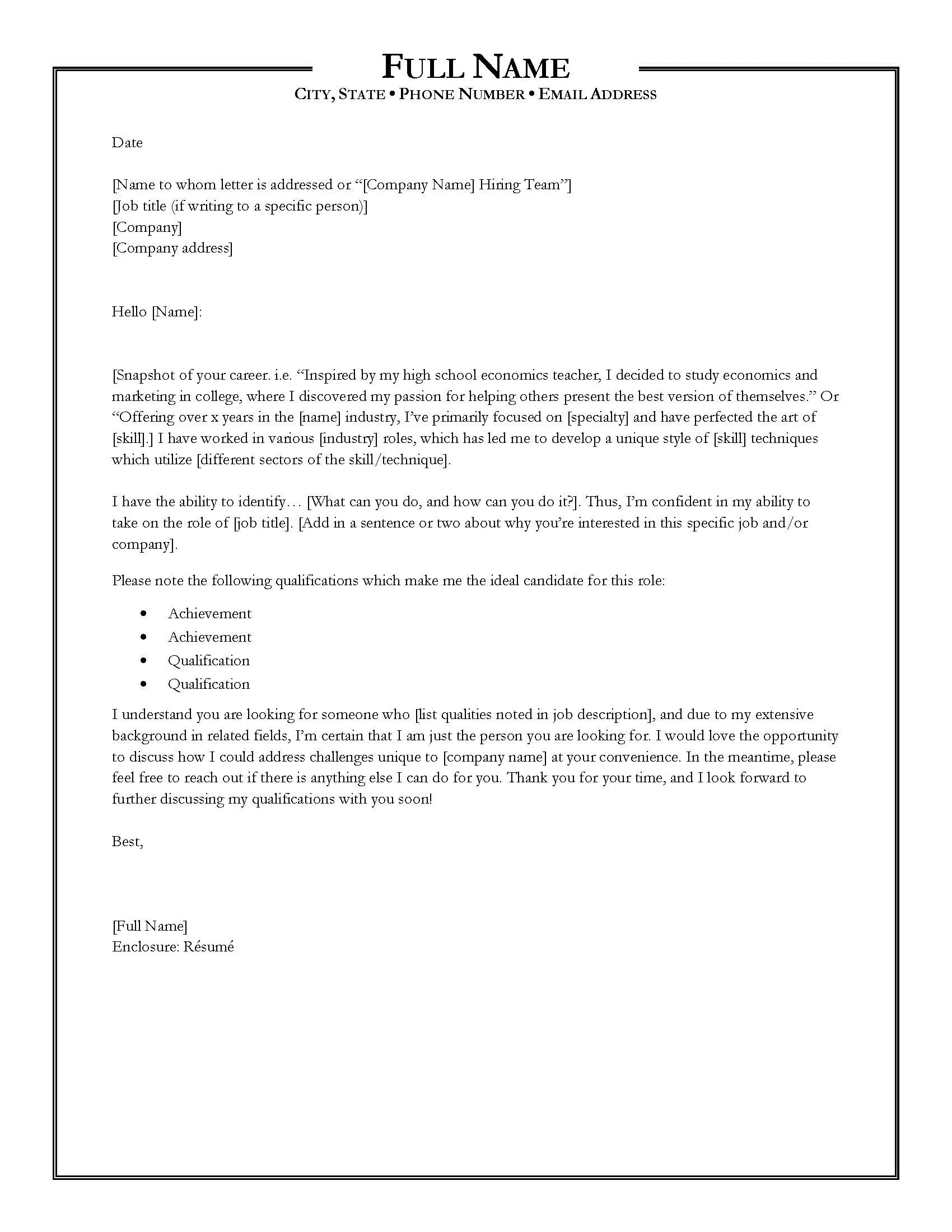Why a Perfect Cover Letter Matters
In the competitive job market, a perfect cover letter is your first and often most crucial introduction to a potential employer. It serves as more than just a formality; it’s your opportunity to make a strong first impression, demonstrate your genuine interest in the role, and highlight your unique qualifications. Unlike your resume, which provides a factual overview of your experience and skills, a cover letter allows you to showcase your personality, explain why you’re a great fit for the company, and connect your abilities to the specific requirements of the job. A well-crafted cover letter can significantly increase your chances of getting an interview, while a poorly written one can lead to your application being overlooked, no matter how impressive your resume might be. A compelling cover letter can differentiate you from other candidates, making you stand out and capturing the hiring manager’s attention right away.
Grabbing Attention The Opening Hook
The opening paragraph of your cover letter is critical because it determines whether the hiring manager will continue reading. Start with a strong hook that immediately grabs their attention. Avoid generic openings such as ‘I am writing to express my interest…’ Instead, try a more engaging approach. This could be referencing something specific about the company, mentioning a mutual connection, or sharing a brief anecdote that demonstrates your enthusiasm for the position or the company’s values. For instance, if you’re applying to a company known for its innovative culture, you might start by expressing your admiration for their latest project or how you’ve followed their progress. The goal is to demonstrate that you’ve done your research and are genuinely interested in what the company does, which immediately sets you apart.
Highlighting Your Skills and Experience

Your cover letter is the perfect place to elaborate on the skills and experiences that make you the ideal candidate. Don’t just repeat what’s in your resume; instead, provide context and depth. Focus on 2-3 key skills or experiences that align with the job description and provide specific examples of how you’ve utilized them to achieve results. Use the STAR method (Situation, Task, Action, Result) to illustrate your accomplishments. Briefly describe the situation, the task you were assigned, the action you took, and the positive result. This structured approach helps the hiring manager understand the value you can bring to their company. Quantify your achievements whenever possible; for example, instead of saying ‘Improved customer satisfaction,’ say ‘Increased customer satisfaction by 15% through implementing a new feedback system.’
Tailoring Your Letter to the Job
One of the most important aspects of writing a perfect cover letter is customizing it for each job application. Generic cover letters are easily identified and often discarded. Carefully review the job description and identify the specific skills, experiences, and qualifications the employer is seeking. Then, tailor your letter to directly address these requirements. Highlight the aspects of your background that are most relevant to the position, and use the same keywords and phrases that are used in the job description. This demonstrates that you understand the role and are a good fit for the company. Show, don’t just tell, by providing specific examples that showcase how your skills and experiences align with the job’s demands.
Showcasing Your Personality
While it’s important to be professional, your cover letter should also reflect your personality. This is an excellent opportunity to let your individuality shine through and help the hiring manager get a sense of who you are beyond your resume. Use a professional but authentic tone. Injecting a bit of your personality helps you connect with the reader on a human level. Whether you have a passion for solving complex problems, a knack for creative solutions, or a dedication to teamwork, be sure to infuse your cover letter with these unique qualities. This will make you more memorable and help the hiring manager envision you as a potential member of their team. However, maintain professionalism by avoiding slang, jokes that could be misunderstood, and overly casual language.
Proofreading and Polishing

Before submitting your cover letter, proofreading is critical. Errors in grammar, spelling, and punctuation can create a negative impression and undermine your credibility. Read your letter multiple times, slowly and carefully. It helps to read it out loud. This can make it easier to catch mistakes. Use grammar and spelling checkers, but don’t rely on them entirely; they can sometimes miss errors in context or style. Ask a friend, family member, or career counselor to review your letter as well. A fresh pair of eyes can often spot errors that you might miss. Pay close attention to the formatting of your letter; ensure that it looks clean, professional, and easy to read. Correct any inconsistencies and make sure the tone is consistent throughout the entire letter. Proofreading is a crucial step to present yourself professionally.
Formatting Your Letter
The formatting of your cover letter is crucial for readability and professionalism. Use a clean, easy-to-read font like Arial, Times New Roman, or Calibri, and keep the font size between 10 and 12 points. Ensure that the margins are set to a standard width (typically 1 inch on all sides) to create enough white space. Use single spacing within paragraphs and double spacing between paragraphs. This will make the letter easy to scan and more visually appealing. Include your contact information at the top, followed by the date and the recipient’s information. Structure your letter logically, with an engaging opening paragraph, body paragraphs that highlight your skills and experiences, and a strong closing that reiterates your interest. Avoid using excessive bolding, underlining, or italics. The aim is to create a balanced and professional appearance that supports the content.
Following Up After Submission
After submitting your cover letter and resume, following up appropriately can demonstrate your continued interest in the position. Send a brief, polite email to the hiring manager or the contact person listed in the job posting. Thank them for their time and consideration, and politely inquire about the status of your application. If you haven’t heard back within the timeframe mentioned in the job description (or a reasonable period, such as a week or two), it’s generally acceptable to follow up. Keep your follow-up email concise and professional, re-emphasizing your interest in the position and mentioning any relevant updates since you submitted your application. Following up effectively can show your enthusiasm and proactive approach to the application process.
In conclusion, crafting a perfect cover letter involves more than just listing your skills and experiences; it’s about creating a compelling narrative that showcases your personality, demonstrates your understanding of the role, and highlights your value to the company. By following these top 7 tips and tricks – from grabbing attention with your opening to proofreading meticulously – you can significantly increase your chances of getting noticed and landing your dream job. Remember that a well-crafted cover letter is your most powerful tool to make a lasting impression and set yourself apart from the competition. It’s time to go the extra mile and create a cover letter that opens doors to your career aspirations.
